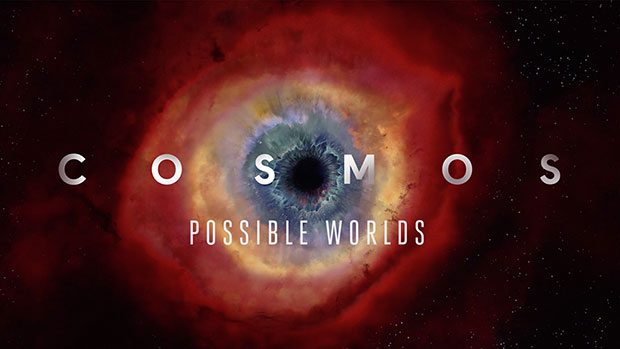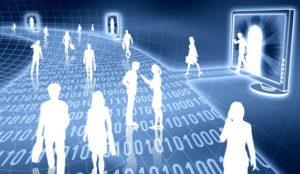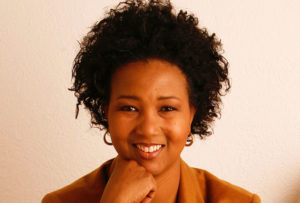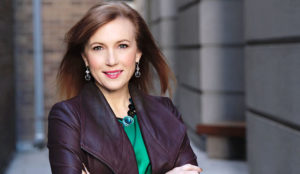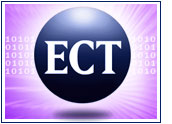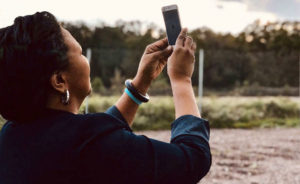Humans may be wanderers by nature, but in the year 2020, with planet Earth overrun by a pandemic, most human activity has come to a shocking halt. Much of what is going on is related to battling the disease on the front lines — either by tending to those who are stricken, or by filling basic needs so the rest of the population can shelter in place.
For many there are crushing financial pressures. For just about everyone, there’s uncertainty. Some people are finding less time than ever to do all the things they want to do. However, many others are toggling back and forth between anxiety and boredom.
Jokes about having exhausted the Netflix library are circulating on social media. Jigsaw puzzles have come down from their shelves. Readers are flying through pages, and gardeners are digging into soil with ardor.
Perhaps one of the best things for a wandering race stuck at home is an opportunity to look outward — to thought-travel into the boundless universe and dream of possibilities so grand and sweeping that they boomerang back from the far reaches of time and space to shower our poor struggling planet with hope.
That’s the experience Cosmos: Possible Worlds offers, and though there was no pandemic to contend with when it was conceived, it seems that’s what it was born to do.
Cosmos: Possible Worlds is the third installment in a series that began 40 years ago with Cosmos: A Personal Voyage, presented by the late Carl Sagan, a beloved scientist who had a long list of impressive credentials and a singular gift for explaining the world in a way ordinary people could grasp. Sagan’s wife Ann Druyan collaborated with him on that first groundbreaking television event.
After Sagan’s death in 1996, Druyan worked tirelessly to cultivate interest in developing a follow-up version of the series, but it wasn’t until nearly three and a half decades had elapsed that “season two” finally aired. Cosmos: A Spacetime Odyssey, presented by astrophysicist Neil deGrasse Tyson, was a critical and popular success, winning numerous awards.
Druyan and others close to the project — including Tyson and executive producers Seth MacFarlane and Brannon Braga — soon dove into plans for a third season, Cosmos: Possible Worlds, which premiered last month in the United States. The 13th and final episode airs Monday on National Geographic. Fox will broadcast the series later this year. It’s ultimately expected to reach 172 other countries.
Cosmos: Possible Worlds takes users on a breathtaking adventure, down rabbit holes to glimpse fragments of our past, and across the vastness of space to sample the tantalizing prospects of other worlds. State-of-the-art VFX, combined with stylized animations, dramatic reenactments, and a soaring musical score make the show exhilarating, moving, thoughtful and compelling.
The script, written by Druyan and Braga, somehow strikes the fine balance between entertainment and instruction. Anchored by hard facts, it is liberated by imagination. Possibilities that fit a rigorously truthful framework can be much more astounding than the edgiest fiction or fantasy.

Tyson’s presentation, like Sagan’s before him, is drenched in sincerity. His goal is to connect rather than to impress — to share the wonder and passion that so clearly drive him. He’s someone viewers welcome into their living rooms because he seems just as interested in having a conversation with them as they might be in picking his brain.
Cosmos: Possible Worlds represents multitudes of hopes and dreams. I had the chance to sit down with Druyan, Braga and Tyson in roundtable discussions earlier this year, and to join a telephone session with Tyson last month. For everyone involved, it seemed clear we were talking about much more than a television series — we were talking about something that actually could move the world.
On Storytelling
Cosmos may be the most popular science TV series ever, but at its heart it is humanistic. It’s not about the nature of the cosmos so much as it’s about the nature of humanity’s relationship to it. To get even a small purchase on the possibilities of space-time, it suggests, we must strive for a deeper understanding of ourselves.

Ann Druyan is the connective tissue that makes Cosmos what it is, according to Tyson. “She feels the universe.”
Though she’s not a scientist, “she’s scientifically literate in all the ways one needs to be,” he said.
“She’s emotionally literate. She is our storyteller. By the way, she’s that special sauce that is shared among all three Cosmoses. She co-wrote all three of them, and that’s what they have in common. That’s why Cosmos doesn’t settle on you as a normal documentary. It enters you in ways that science programming typically does not,” Tyson explained.
“You end up feeling for the characters. You end up being motivated to rise up with your newly acquired scientific insights and bring it to bear on making a better world. This one is specifically that — Cosmos: Possible Worlds,” he said.
“We are a story-driven species,” said Druyan. “Every story that we tell has to satisfy different criteria. It has to be a way into a complex scientific idea or an important scientific idea. … We’re aiming for your brain, your eye, your heart, your senses, your ear … via effects. Everything has to be working together in concert to give you a consummate experience, and to attract you to want to know more.”
Going back to the dawn of civilization, she added, storytelling has been the way to hand down, from generation to generation, the things we value most.
While stories form the heart of Cosmos: Possible Worlds, adherence to rigorous scientific truth is its hard spine. The series performs a kind of alchemy in each episode, turning real, serious science into palatable morsels for viewers who otherwise might not find an approach to it.
Druyan explained what’s behind the apparent magic.
“Well, you know, I’m not a scientist. I was derailed from a life in science in my junior high school math class by a very mean teacher. And so I couldn’t do the math. But neither could Michael Faraday — one of the greatest scientific geniuses of all time. He couldn’t do the math! But he was someone Einstein looked up to, and he kept his picture above his desk when he worked,” she said.
“So I understand that if I don’t get it — if I don’t understand it — it’s no good. Because I want everyone to understand it. So sometimes Brannon and I sit together with distinguished scientists and we ply them with questions. We ask them every question we can think of until we both understand it. And that’s how we do that,” added Druyan.

“You know, we’re not dumbing it down, but we want to empower people. We want our audience to own these ideas — to finish watching an episode of Cosmos and feel more powerful — stronger, and more ready to meet these challenges,” she added.
“Einstein said — I’m paraphrasing, but it’s pretty close — If science is to become truly fulfilled in the same way that art has, it must penetrate… it’s inner meaning must penetrate into the consciousness of everyone. I thought, ‘Wow, that’s the dream of Cosmos. That’s exactly what we’ve all been trying to do,'” Druyan said.

The Information Paradox
Another thing that’s ingrained in humans is the compulsion to explore.
“We’re wanderers ,” said Braga. “It’s an organic impulse in humanity.”
“It’s part of our nature,” said Druyan. “Remember, we only invented agriculture 10, 12, 15 thousand years ago, but for perhaps a million years we were hunter-gatherers. We were wanderers, and that’s part of our nature. The idea of settling down and acquiring so much stuff is really just a tiny fraction of our human history.”
That impulse to move about gradually led humans to congregate in cities.

“The good thing about cities is, in a very short interval of space and time, you can be exposed to very different ideas from yours,” noted Tyson.
“It’s where people come historically to trade. If you’re a trader, you would come from that compass direction, which is different from this other compass direction where somebody else came from. The weather is different, the culture is different, their religion is different. The learning tactics are different, and you sit at the same table, exchange those ideas. Civilization advances swiftly when that happens — advances meaning, discoveries are made for the greater good of all. That’s what I mean by advances,” he said.
“OK, now the technology that has come upon us, specifically the Internet, has had an opposite effect. Who would have thought? The opposite effect is, you have an idea that might be a little fringy. In a normal situation, you would confront others that would demonstrate to you that that was a fringy idea — someone at the coffee lounge, someone at your school, someone in the street, in the park. Then that idea would wither on the vine,” said Tyson.
“What the Internet has done… it has allowed you to find anyone else in the world with that same fringy idea, giving you false confidence that you’re onto something — that you’ve got a truth that no one else knows about,” he continued.
“Any time someone conflicts with your truth, you go find other people that continue to agree with you. They feed your ideas rather than challenge your ideas. This is how and why we have an entire community of flat-Earthers out there. They have tribalized. The Internet has tribalized us in ways that give the opposite effect of what it means for everyone to live in a city,” Tyson said.
“I don’t have a solution for that,” he admitted. “I don’t know what to do, other than to train people before they get on the Internet what’s going on — to inoculate themselves against charlatans who are out there, just trying to convert them into ways that do not have their own health, wealth or intellectual growth as a priority.”
In fact, Cosmos: Possible Worlds may be a potent force against the kind of insular thinking that characterizes science-deniers and flat-Earthers.
“I think we have a much better story to tell than they do, because of course, nature is so much more creative and capable of dazzling us than the best stories the humans have ever been able to make up,” said Druyan.
“We’re a part of nature… we’re just a reflection of nature. So our fairy tales and our deceptions — they’re very thin. They only have a shelf life that’s finite, whereas the beauty of nature, in my view, is it’s infinite. So we want to tap into that beauty, and we want to present it so that people will be attracted to it,” she continued.

“We don’t want to make anyone feel stupid. We don’t want to demean anyone. You know the thing about science that I love so much is that it has a humility, because it knows it could be wrong. Unlike so many other human enterprises … the person who proves to us that we are wrong — we’ll give them the highest prize. That’s the power of science,” Druyan said.
You can’t lie your way to Mars … you can’t do it. If there’s any fudging any one of the hundred thousand or million different steps … you’ll miss your mark. So science delivers the goods,” she said. “There’s been a recent antipathy towards science, which I believe is to our greatest peril. Not that scientists haven’t committed grave crimes — I completely know that’s true — but how are we going to keep that from happening if we don’t have an enlightened public — a citizenry of informed decision makers who can right the ship?”
Our impulse to wander — clear off our own planet — has made it possible for us to gain a better understanding of the ship that needs righting, suggested Tyson.
“As an astrophysicist — to me, Earth is not a place where you live, where I live. Of course it is that, but that’s not how I think about it. I think about it as a planet, one of eight … in the solar system. Our sun, you think of it as something that warms your day. I think of it as just one of 100 billion suns in the galaxy, the Milky Way galaxy. People who look up at the night sky see the Milky Way streak across the dome. I look at the Milky Way as one of 100 billion galaxies. Only with that outlook, do you arrive at cosmic perspectives on things,” he said.

Stepping away from Earth enabled us to view it in a different way.
“This is what happened when we went to the moon. … We actually discovered Earth for the first time,” said Tyson.
“Yes, Earth is front and center, but not until after we have stepped off of the Earth and then come back. Now you look at it afresh,” he continued.
“Now we can deliver the messages and the principles on which becoming a better citizen would be based,” Tyson said.
In other words, now we can go about righting the ship.

Trusting Science
Cosmos: Possible Worlds doesn’t engage in the kind of introspective discussions of issues and ideas that are the fodder of roundtable discussions with its makers. It’s more like a magic carpet ride that seduces viewers into a joyful experience of some of the wonders of life and some of the marvels of the universe.
“What Brannon and I intended,” said Druyan, “is exciting people who had no idea they had the aptitude or the interest in science to become excited about it. And then for those who do, we wanted to thrill them with the way we’ve been able to visualize and to tell these great stories.”
It is not an overstatement to say that science is more important than ever as we struggle to understand and overcome the coronavirus threat that has engulfed the entire planet.
“To me this is a great experiment going on in real time. Can the world say to itself, ‘We have a common enemy? That enemy is not each other, the enemy is this invader to our species. It’s a virus,'” said Tyson.

“All the other reasons we would find to kill each other, because of skin color or who we worship or what line in the sand you happen to live on … all these differences really look petty compared with confronting a common viral enemy,” he continued.
“The cooperation is necessary because we all travel. That’s one of the great features of modern civilization. There are no pockets of people living unto themselves anymore. We all communicate, practically to every corner of the planet,” he pointed out.
“To me, this is an experiment in whether people understand the importance of listening to scientists — in this case, medical professions. There comes a time when you don’t have the luxury to pick and choose what you want to believe, and reject what you don’t want to believe simply because it conflicts with your politics or your culture, or your religion or your ideology,” Tyson said. “It’s an experiment. If we come through this on the other side, it’s because people listened to the advice of science professionals.”
A remark that often passes Druyan’s lips seems apropos to the current challenge: “It matters what’s true.”
Perhaps fighting the pandemic bears some resemblance to other heroic human endeavors, including the core human behavior reflected in the past, present and future adventurers represented in Cosmos: Possible Worlds.
At the end of the day, remarked Braga, it says “we can do it. We can be explorers in space and do the right thing, even when faced with hard challenges. Cosmos is profoundly aspirational. It doesn’t shy away from the hard truths.”

